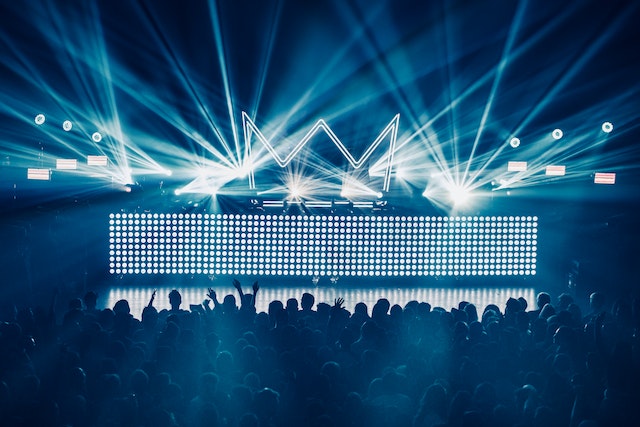
With just over three minutes for music and performance, can you imagine a singer without a stage? Now, fans are interested in comeback shows, debut performances by new singers, big awards ceremonies at the end of the year, and even the stage where they shine even more by playing their favorite singers over and over again through YouTube. Articles comparing the performances of comeback singers by broadcasters are also troubling. With dozens of singers in a short span of 90 minutes on average, music broadcasts are a place where many ideas and differentiated creatives unfold. So, what is the process by which the music broadcasting stage is born?
The music broadcast stage consists of the main stage used by the performers on a rotating basis and a pre-recorded stage for the singers making a comeback. To create a set, the production team, lighting team, camera team, set team, electric type including a big digital LED frame (visit https://www.digitalframe0.com for more info) team, and truss (structural installation) team work together, and usually, 2~3 designers are involved. As the key is how well it reflects the artist’s concept, continuous communication with the directing team and the singer’s team is essential. MBC < Show! Jinhee Kim (Art Design Department), who is in charge of the music-centered >, said, “For rookies, we focus on raising awareness by adjusting the design intensity so that the character is emphasized as much as possible and directly exposing the team logo. For singers whose names are known, we focus more on song interpretation to increase audience immersion.” To do this, the designer studies the singer’s visual concept in advance, as well as various visual materials such as music videos, albums, and choreography videos.
In particular, the comeback performance, which attracts high attention from viewers, is also the stage that designers care about the most. It mainly borrows the concept pursued by the singer and the music, but sometimes it is deliberately not referenced for differentiation. Director Gong Sung-hyun (Art 1 Team), who served as stage design and production manager for SBS’s <Inkigayo> and SBS<Super Concert in Hong Kong> in 2019, explained, “WINNER’s ‘Ah Yeah’ in <Inkigayo> a song with a bright concept set against the backdrop of a beach, but I solved it with a slightly darker concept with an indoor backdrop.” From the singer’s point of view, he often takes the designer’s different interpretations positively. If no visual reference is given, the designer may come up with ideas relatively freely, apart from the concept of the music. As a result, viewers can experiment with the stage even if they are not aware of it.
ALSO READ: Why K-Pop is a Popular?
Minwook Kim, designer of Mnet<M Countdown> (Art Creation 1 Team, Tech & Art Division), designed Space Girl’s “It’s a Secret” stage using 3M’s Dicroic film, which was not often used at the time. It is a film that changes color depending on the angle, and I chose it because I thought it was a material that interprets the keywords of the group “space” and the girlish sensibilities of the members. He says that although the completion was a little disappointing due to the short preparation period of about three days, this attempt allowed for a more diverse stage. On the other hand, the main stage, another composition of music broadcasting, refers to the space used by various singers in turn. It mainly uses electric type, lighting, and LED video, especially directing through video, which overcomes time and space limitations and enables efficient conversion, so it is often used on the main stage. Therefore, video design with a different concept every week is essential. Hong So-yeon (KBS Art Vision), who is in charge of the < concert > <Gayo Stage> with KBS < Music Bank>, said, “The results we create are far from everyday life. Moreover, because it is shown and recorded on video, it is a different approach to stage design such as concerts and musicals.” The main difference is that there is a medium called a camera.
In addition, most of the recordings are carried out in the studio, so space is inevitably limited. There are various variables, such as the presence of singers is not easily evident in large sets, or conversely, the small space restricts the movement of singers. However, cameras and broadcasting technologies can overcome these constraints and produce entirely new results. SBS stage director Gong Sung-hyun said, “We also call it ‘eye set,’ which refers to a case where a set is created with a specific camera shot or effect in mind, but a completely different effect is achieved,” explaining that since the human point of view and the camera point of view are different, designers can create more effective designs if they have knowledge or sense of the camera.
Above all, the stage design of music broadcasts is only given for 1 week, and for year-end stage and award ceremonies, 1~2 months. However, the designers I met during the interview all said, “The spectacle of bringing out the best results in a given time is the charm.” I feel joy through the explosive synergy between the singer standing in the finished set and the audience watching it. Wouldn’t that emotion be similar to a singer who pours out the best energy in a short period of time? Above all, at a time when K-pop is more popular than ever, designers emphasized the need to strive for stage diversity and differentiation rather than relying on the singer’s concept or viewers’ reactions. And even now, beneath the stage, many designers are fiercely pouring out their own creatives. For the best stage that captures our attention and maximizes our emotion.
